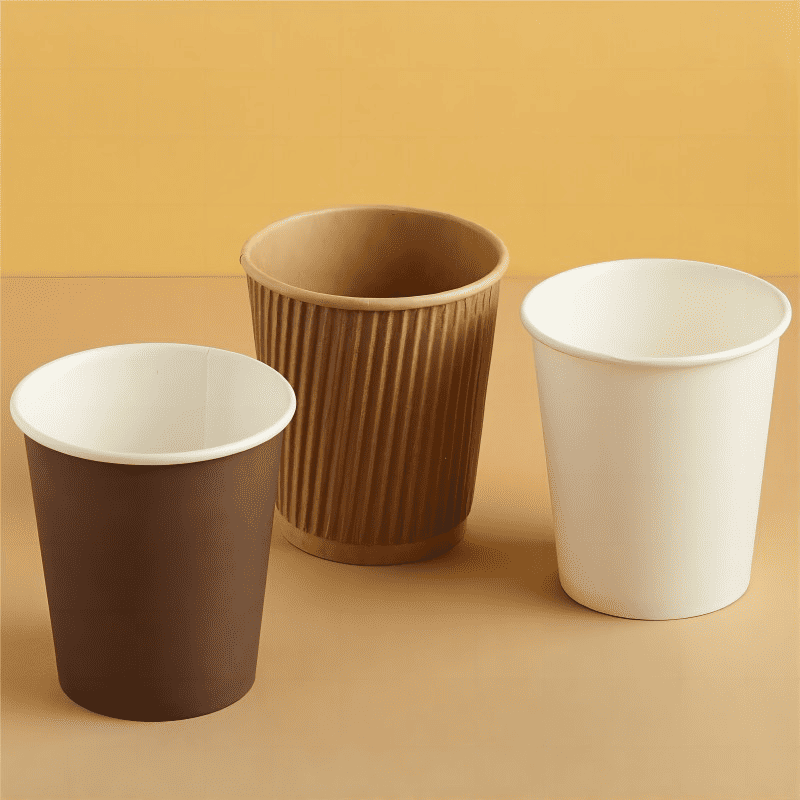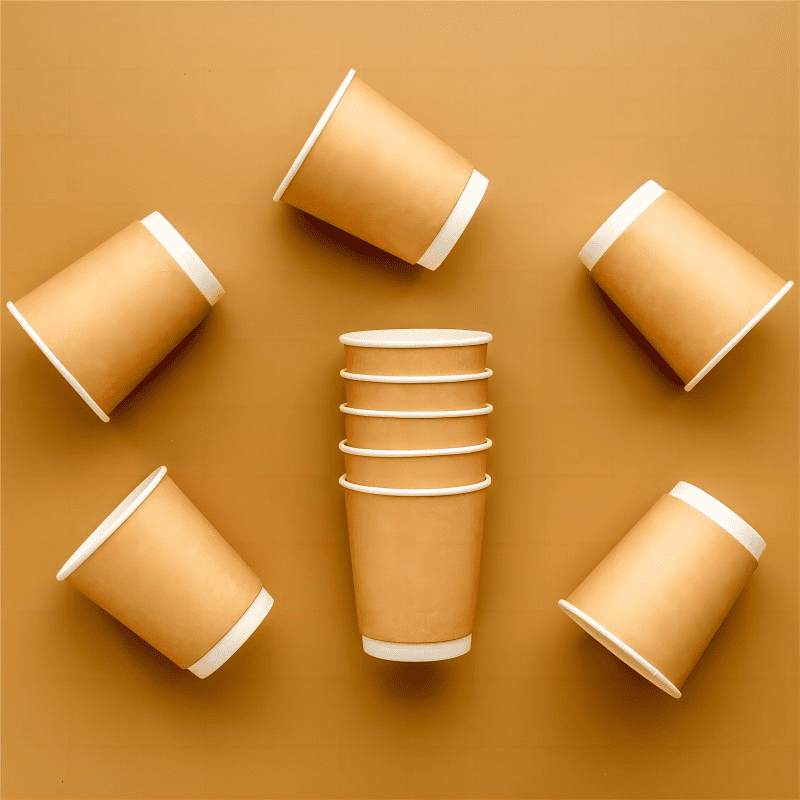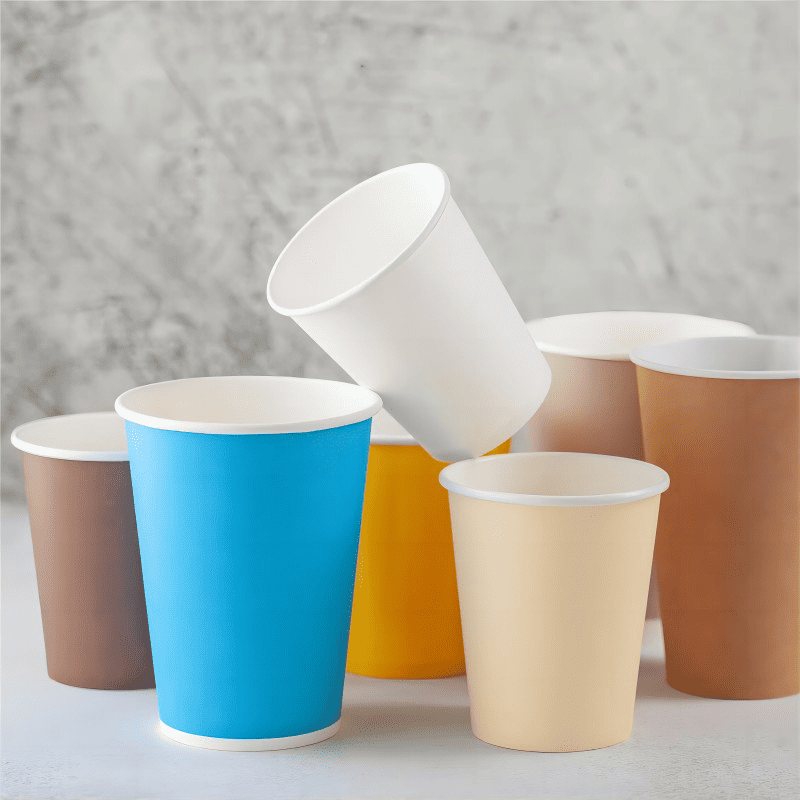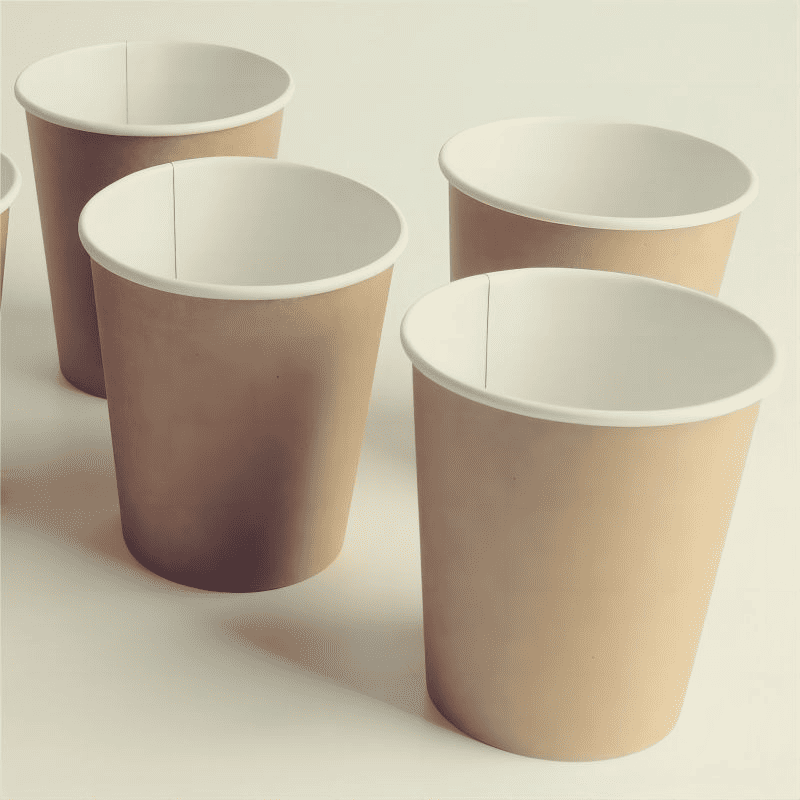Wax-coated paper cups were once common in cold drink service, but today, most companies are moving away from them for environmental and practical reasons.
We can replace wax-coated paper cups with PE-lined cups1, PLA-coated cups2, or fully compostable alternatives3 made from water-based coated paper4.
 I remember when wax-coated cups were the go-to choice for soft drinks. Customers liked the smooth texture and water barrier. But over time, these were replaced with new coatings that improved durability and recyclability5.
I remember when wax-coated cups were the go-to choice for soft drinks. Customers liked the smooth texture and water barrier. But over time, these were replaced with new coatings that improved durability and recyclability5.
What happened to wax-coated paper cups?
They disappeared from most markets because of performance and recycling limits. Wax-coated cups have been largely replaced by PE or PLA-lined cups due to better durability, suitability for both hot and cold drinks, and improved processing in recycling facilities.

Wax melts under heat, so these cups were not ideal for hot drinks. They also had limited recyclability5 because separating wax from paper fibers was challenging. As sustainability awareness6 grew, businesses moved toward coatings that could withstand varied temperatures and work better in recycling systems.
| Cup Coating Type | Hot Drink Use | Cold Drink Use | Recyclability |
|---|---|---|---|
| Wax | No | Yes | Limited |
| PE | Yes | Yes | Requires special plant |
| PLA | Yes | Yes | Compostable in facility |
Can wax-coated paper cups be recycled?
The short answer is rarely, and only in special facilities. Most municipal recycling programs do not accept wax-coated cups because removing the wax is not economically viable.

I have toured many recycling plants. Technicians explained that wax contaminates the paper pulp during processing, making it less useful for creating new products. This means most wax-coated cups end up in landfills unless collected and processed by specialized facilities.
| Coating | Curbside Recycling | Special Plant Recycling |
|---|---|---|
| Wax | No | Rare |
| PE | No (most cases) | Yes |
| PLA | No (most cases) | Yes, compost facility |
Can I reuse paper cups?
You can reuse them in some situations, but with limits. Paper cups, whether wax or PE-lined, are designed for single use. Light reuse for the same type of drink is possible, but prolonged reuse weakens the cup and risks leaks.

In my own tests, a wax-coated cup holding iced tea could be reused several times in one day without failure. However, once the cup structure absorbs moisture, it weakens quickly. Microbial growth can also be a health concern if reused beyond a short time.
| Use Type | Wax Cups | PE Cups | PLA Cups |
|---|---|---|---|
| Cold drink | Short | Medium | Medium |
| Hot drink | No | Medium | Medium |
| Long term | No | No | No |
Are waxed paper cups environmentally friendly7?
Compared to modern eco-coatings, they are not the greenest choice. Wax-coated cups use natural paraffin or soy wax, which is biodegradable, but their limited recyclability5 and short hot-drink use make them less sustainable overall.
<sup id= wax cup eco friendliness](https://papercupshkl.com/wp-content/uploads/2025/08/paper-cups-5.png) 7" />
7" />
While wax is a renewable material, the cups’ short lifespan means more waste over time. Newer coatings like water-based films or PLA offer better sustainability because they balance biodegradability with versatility. I often recommend these for brands aiming at stronger environmental profiles.
| Coating Type | Biodegradable | Recyclable | Compostable |
|---|---|---|---|
| Wax | Yes | Limited | Sometimes |
| PE | No | Limited | No |
| PLA | Yes | Limited | Yes |
| Water-based | Yes | Yes | Yes |
Conclusion
Replacing wax-coated paper cups with modern coated or compostable designs improves functionality, recyclability5, and environmental performance, benefiting both businesses and the planet.
1.Explore the advantages of PE-lined cups, which offer better durability and recyclability compared to wax-coated options. ↩
2.Learn about PLA-coated cups, a sustainable alternative that balances biodegradability and functionality. ↩
3.Discover fully compostable options that are environmentally friendly and suitable for various uses. ↩
4.Learn about water-based coated paper, a sustainable option that enhances recyclability and reduces waste. ↩
5.Understand the recyclability of various cup types and how they impact waste management. ↩
6.Explore how growing sustainability awareness is influencing packaging decisions in the beverage industry. ↩
7.Investigate the environmental impact of waxed paper cups compared to modern eco-friendly alternatives. ↩